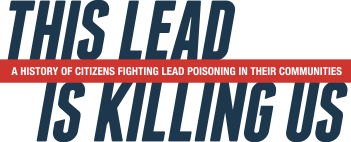Description: College and health professional students examine the history of how ethnic groups engaged with the environmental world and the environment’s role in the production of health disparities.
Scholars have begun thinking more critically about the boundaries of history, particularly the overlap of disciplines and fields long-thought of separately. For example, recent scholarship on the ways in which different ethnic groups engaged with the environmental world in time and space has pushed the boundaries of race and environmental history in important ways. At the same time, scholarship on race and medicine and the environment’s role in the production of health disparities is now well established. This teaching module provides a template for thinking about these historical connections in the classroom.
The Race, Medicine, and Health in America teaching module is divided into three thematic units. The first unit focuses on asthma and lead poisoning; particularly how racism and inequality results in differential exposure to toxic environments, or the inability to control environments. Unit two includes two classes on the origins of the environmental injustice movement. While questions of race and environmentalism date to the late 19th–century, what we now consider the origins of the modern environmental racism movement emerged from the 1978 Love Canal disaster and 1982 Warren County, North Carolina Protests. Both revolve around toxic contaminants dumped into the ground and vulnerable populations that protested such actions. The final unit includes two classes on environmental disasters, health and race. The 1995 Chicago Heat Wave and Hurricane Katrina in 2006 are vastly different environmental disasters. The 1995 heat wave was subtle, lacked the visual destruction of private and public property, and perhaps more than other disasters reified the reasons why minorities and the poor suffer the most from environmental catastrophes. Hurricane Katrina was more visible in its destruction and reflected long–standing vulnerabilities of race and class rooted in medical dependency to life–sustaining technologies.
The three units are divided into six one–hour long classes, each providing an introduction to the material, primary and secondary sources, and discussion questions instructors might use while teaching about the interconnectedness of race, medicine and the environment in the 20th century.
This module is authored by Richard Mizelle, PhD. Information about the author, suggested use, and academic objectives, is also available online at About the Module.
Class 1: Created Suffering and the Rise of Asthma
The first class introduces students to the social and environmental factors contributing to asthma disparities in the Unites States.
Class 2: Lead Poisoning and the Politics of Uncertainty
The second class focuses on the widespread use of lead in everyday products and the public health consequences of such exposure to the community.
Class 3: The 1978 Love Canal Disaster
The third class explores notions of environmental citizenship and activism through the Love Canal disaster and its impact on health, policy, and gender politics.
Class 4: 1982 Warren County, NC Protests
The fourth class focuses on the rise of environmental justice activism in response to toxic dumping in poor and minority communities, highlighting the role of race, protest, and systemic inequality.
Class 5: The 1995 Heat Wave
The fifth class examines how the 1995 Chicago Heat Wave exposed deep inequalities in race, class, age, and infrastructure.
Class 6: Hurricane Katrina
The sixth class explores how Hurricane Katrina exposed deep-rooted health and housing inequalities, particularly focusing on the vulnerability of medically dependent populations during environmental disasters.






